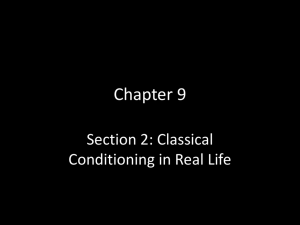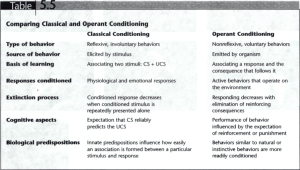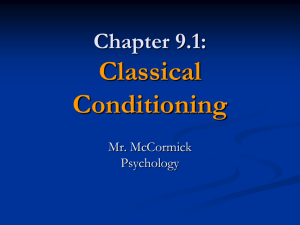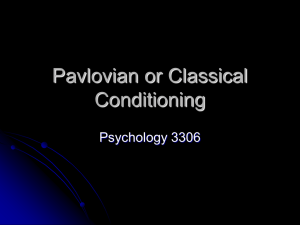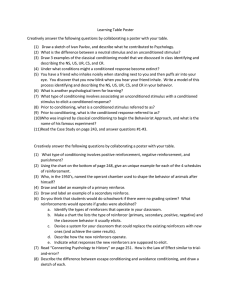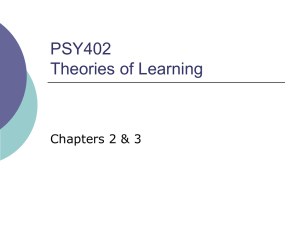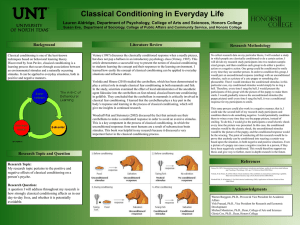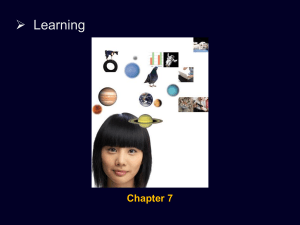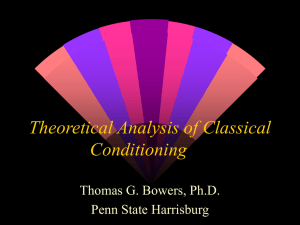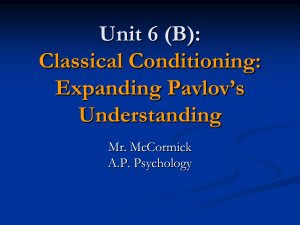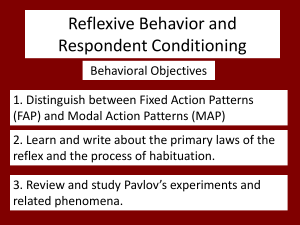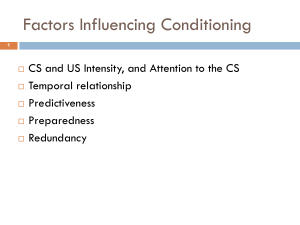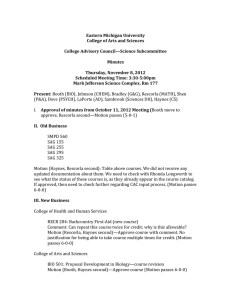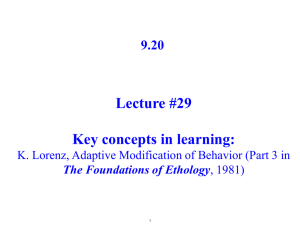Psy 462 Learning
advertisement
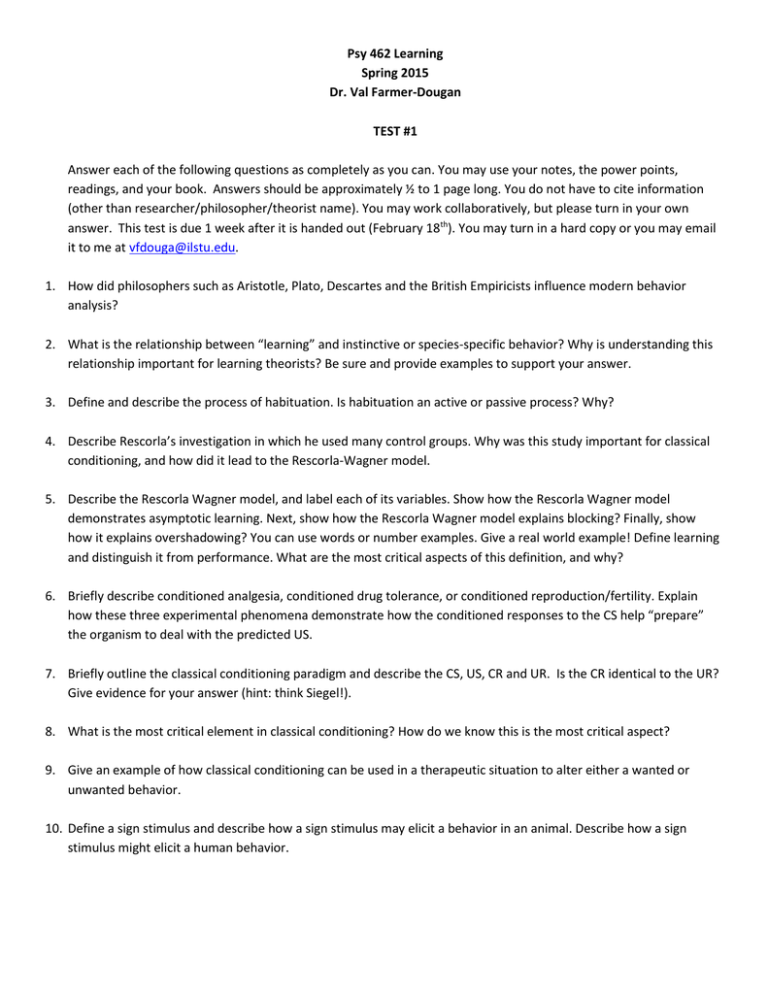
Psy 462 Learning Spring 2015 Dr. Val Farmer-Dougan TEST #1 Answer each of the following questions as completely as you can. You may use your notes, the power points, readings, and your book. Answers should be approximately ½ to 1 page long. You do not have to cite information (other than researcher/philosopher/theorist name). You may work collaboratively, but please turn in your own answer. This test is due 1 week after it is handed out (February 18th). You may turn in a hard copy or you may email it to me at vfdouga@ilstu.edu. 1. How did philosophers such as Aristotle, Plato, Descartes and the British Empiricists influence modern behavior analysis? 2. What is the relationship between “learning” and instinctive or species-specific behavior? Why is understanding this relationship important for learning theorists? Be sure and provide examples to support your answer. 3. Define and describe the process of habituation. Is habituation an active or passive process? Why? 4. Describe Rescorla’s investigation in which he used many control groups. Why was this study important for classical conditioning, and how did it lead to the Rescorla-Wagner model. 5. Describe the Rescorla Wagner model, and label each of its variables. Show how the Rescorla Wagner model demonstrates asymptotic learning. Next, show how the Rescorla Wagner model explains blocking? Finally, show how it explains overshadowing? You can use words or number examples. Give a real world example! Define learning and distinguish it from performance. What are the most critical aspects of this definition, and why? 6. Briefly describe conditioned analgesia, conditioned drug tolerance, or conditioned reproduction/fertility. Explain how these three experimental phenomena demonstrate how the conditioned responses to the CS help “prepare” the organism to deal with the predicted US. 7. Briefly outline the classical conditioning paradigm and describe the CS, US, CR and UR. Is the CR identical to the UR? Give evidence for your answer (hint: think Siegel!). 8. What is the most critical element in classical conditioning? How do we know this is the most critical aspect? 9. Give an example of how classical conditioning can be used in a therapeutic situation to alter either a wanted or unwanted behavior. 10. Define a sign stimulus and describe how a sign stimulus may elicit a behavior in an animal. Describe how a sign stimulus might elicit a human behavior.

